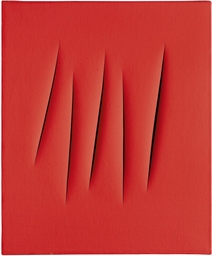Inadequacy
Concepts like art and life should be interspersed with each other since there is no reason for keeping a distance between human work and the human itself. Art is life (creative energy sexual) Who said that? This is the reason why the most intriguing art is the one which talks about life, which unravels different experiences, recounts specifics, curiosities, or points of view.
In the realm of life it is essential to defy the notion of a perfectionism that can be achieved (in response to such expectations the only form of art we can refer to is that of cinema). The nature of error is the essence of being Human, the stumbling block that we've all fallen at one time or another: superficial judgment, haste and anger, the constant need for control and security bad choices. Don't you dare say you've not made any of these mistakes?
Open: a new perspective from which to see
If we fall, we hurt our bodies more or less and are prone to judge the fall as a mistake, or to make that the mistake was a result due to the expectation we have of ourselves and other people. The wound is actually the place where we can see the truth, from which we are no longer in the false notion of perfection (which should be the case if it shouldn't be hurting) and take a look at what's broken. We look at the wound and examine ourselves.

Fontana cut her hair with the consciousness that breaking and opening is or tearing as destruction is often the strongest creative act, particularly in a world in which, even from a young stage, we're immersed in a strong, impregnating system of beliefs and models. It's not a coincidence that Fontana stated in 1963 in the course of an interview Nerio Minuzzo:
"The critics have always been a slam on me, but I have never was concerned about it. I went on regardless and I didn't take anyone's salute. For years they called me 'the one that has the holes', with a little pity. However, today I can see that my cuts and holes have created a taste, are accepted and have even found practical uses. In bars and theatres they create ceilings using holes. Because , today that even people on the street can appreciate the latest forms. It's the artists, unfortunately, who understand more '.
When Fontana speaks of streetspeople, he is evoking the imagery of imperfection, in which the hole is the same as every other, in which the becoming of life can be seen. Fontana is not scared of dust nor the brutality of the creative act and throws tar at an artifact made of plaster of a man and calls it 'Black Man'.
Years later, the cut transforms into the conquer of space, in the sense of an overthrow of sculpture and painting through the creation of a new dimension that includes both and a break with verticality, in favor of a crossing passage.
This pulsation, which is triggered by taking in and exhaling from the canvas is reminiscent from afar, in a more intellectual and bourgeois version of the work Gina Pane later did on her body: the gesture is nonetheless the immortal protagonist in that context where art is bound to be destroyed. lucio fontana painting and wounds are path, boundary and exchange. The artist herself opens the canvas and declares its finiteness; the holes transform into black holes that give depth and make us perceive the infinite , which we'll never know.

We are waiting for new discoveries that we do not yet know
Fontana called the cuts "Waits," which are the openings from which new and unique things emerge that we do not yet are aware of.
When we commit a mishap and hurt or injure the other injuring or hurting another, we need to wait for a period before we react. It starts with the shock of making a mistake and the failure to overcome, and then figuring out what path to take to remedy the damage or get away with it and then waiting for the consequences of the break, that slip, which could actually be an amazing source. But it's not.
A few people have understood (and are able to comprehend) this notion because they are constantly judging the way that human beings and reality should be, too used to the dual nature that is the nature of canvas. We fight with all our might the correct methods, the correct way to appear and be as a person in the society, that we turn to standards that end up defining normativity.
Nothing could be more incoherent. We are convinced that we know everything that we do, we compare our standards to all other living organisms and ecosystem on the planet, but in reality we see it from a narrow , biased perspective that is not in line with the reality of Anthropocentrism, but also individual interpretations of the other which are almost never the most accurate.
Accept: no perfection in the strict sense.
The same is true of the society that demands us to do our best at all cost, but without pondering the fact that, instead of improving standards, we could learn to be more accepting of things just the way it is. Do we accept pain? Do we accept death? Accept body parts? Do we accept diversity? And, most importantly, once we accept, do you respect our differences?
lucio fontana price , we resort to invisibilising the things that do not match the "perfect" nature of our very own planet or the universe. We are shocked, angry, disgusted and pushed aside, then swept under the carpet, and so we manifest our imperfections, which we are in reality, yet we refuse to accept it.
Being aware of one's limits is important and so is understanding the interconnectedness of everything in the world system. Either we are ALL put in a position to do our best, or there is no competition or effort worthwhile with the sole goal of fuelling the spread of inequality. It's all very well and good to know that some people who have put in long hours have achieved it as a result, just like those who have been so lucky. However, in a larger sense, constantly stretching the boundaries of what is possible the definition of 'a perfection' in an 'imperfect setting; there is no "perfection" in the absolute sense.
Does this even exist?
Cut and let the truth be revealed
We can conclude that Fontana tried, because right from the beginning he resisted the straightforward ways to be successful, opting instead to explore the unknown and unpredictability, which is to say, he renounced the pretense of being the only one that was successful, he pursued the research path that led him to unravel certain truths.
For me, and in my personal opinion, Fontana is the one who cuts the curtain and lets light shine through, even if he put obscuring black sails in the background. A spatial artist in the same way as the early pioneers of the art that is understood not just as a piece of work, but as a gesture which is a gesture that revolves around and as a result of action on the space, as the activation of narrative, and this is the way it is practised today.
For me, his cuts reveal all of this, opening up new perspectives to art, new points of view about the world and new questions. The wound for this, is more than just pain: the wound is a symbol of mortality, shortness, uncertainty and fragility. Wounding makes us question and makes us think how we can improve our lives, and this is vital to keep our feet in the right place. While it can be difficult to endure and as hard as it is in a perfect story of our existence it is ideal (and just) to learn only through positive reinforcements. As long we as a species are unable to stop the suffering of others as well than our own, we are condemned to the unresolved and to live in an insanity.
So let us enjoy the cinema and its happy endings, its beauty and perfection that is taken for granted , and that we take as a template for our lives, because the visual arts contrary to what they appear are the children of suffering, and any artist, to convey a bit of truth, must go through the pain.
